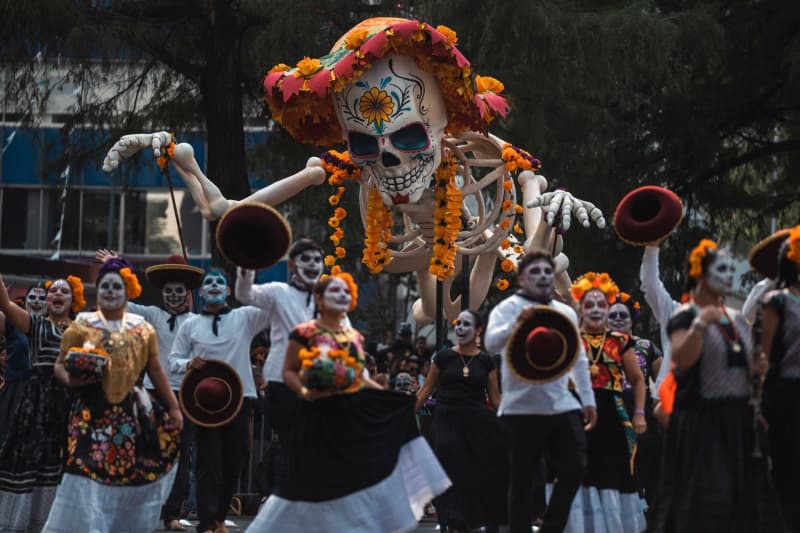The Day of the Dead celebrations in Mexico City attracted an impressive audience of over one million spectators, who gathered to enjoy a vibrant parade showcasing colorful floats and elaborately dressed participants. This annual event is part of a broader tradition that honors deceased loved ones, coinciding with the Catholic observances of All Saints and All Souls Days, observed on November 1 and 2. Marking the beginning of these festivities, the parade featured illuminated skeletons, intricately crafted skulls, and beloved sweets, all of which are integral symbols of the occasion. The event not only highlights the rich cultural heritage of Mexico but also serves to reinforce communal bonds and the memory of those who have passed away.
The parade, a staple since its inception in 2016, consisted of seven floats and was accompanied by a lively contingent of around 10,000 participants in traditional costumes. The route spanned eight kilometers, stretching from the historic Chapultepec Park to the iconic Zócalo square in the heart of the city. This vibrant display of color and culture is a testament to Mexico City’s rich artistic traditions and its dedication to preserving cultural practices that embody the nation’s identity. With an impressive turnout and community involvement, the Day of the Dead parade has become a central feature of the city’s cultural calendar.
The significance of the Day of the Dead goes beyond mere celebration; it represents a profound merging of old and new traditions. The festival stems from indigenous pre-colonial practices that date back centuries and has adapted over time to incorporate elements of Catholicism introduced by Spanish colonizers in the 16th century. This blend of customs creates a unique cultural tapestry that resonates with many people across Mexico and beyond, transforming mourning into a festive celebration of life. The festival also marks the conclusion of the harvest season, making it a time of both remembrance and renewal.
The inclusion of the Day of the Dead in UNESCO’s Intangible Cultural Heritage list underlines its global significance and recognition of its cultural importance. This acknowledgment reinforces the notion that cultural practices are vital to the identity and continuity of communities, providing them with a sense of belonging and shared history. The Day of the Dead is not only meant to honor those who have passed but also to educate future generations about their ancestry and the values it imparts. Through music, dance, and vibrant costumes, the festival serves as a living history lesson that connects the past with the present.
Overall, the parade and the accompanying festivities offer the people of Mexico City an opportunity to engage in a communal experience that fosters unity and shared joy, amid the remembrance of loved ones. Participants frequently dress in a diversity of costumes that draw from various aspects of Mexican culture, including traditional attire and contemporary interpretations. The lively atmosphere created by both the spectators and the participants is palpable, turning the streets of Mexico City into a canvas of color, creativity, and cultural pride.
In conclusion, the Day of the Dead celebrations in Mexico City have evolved into a significant event characterized by community participation, cultural heritage, and joyful remembrance. As the festivities continue to grow each year, they highlight the importance of honoring the deceased while also celebrating life and the legacies that remain. The event serves as a powerful reminder of the cultural richness of Mexico and its ability to adapt traditions over time, ensuring that the stories and memories of those who have come before are never forgotten.

